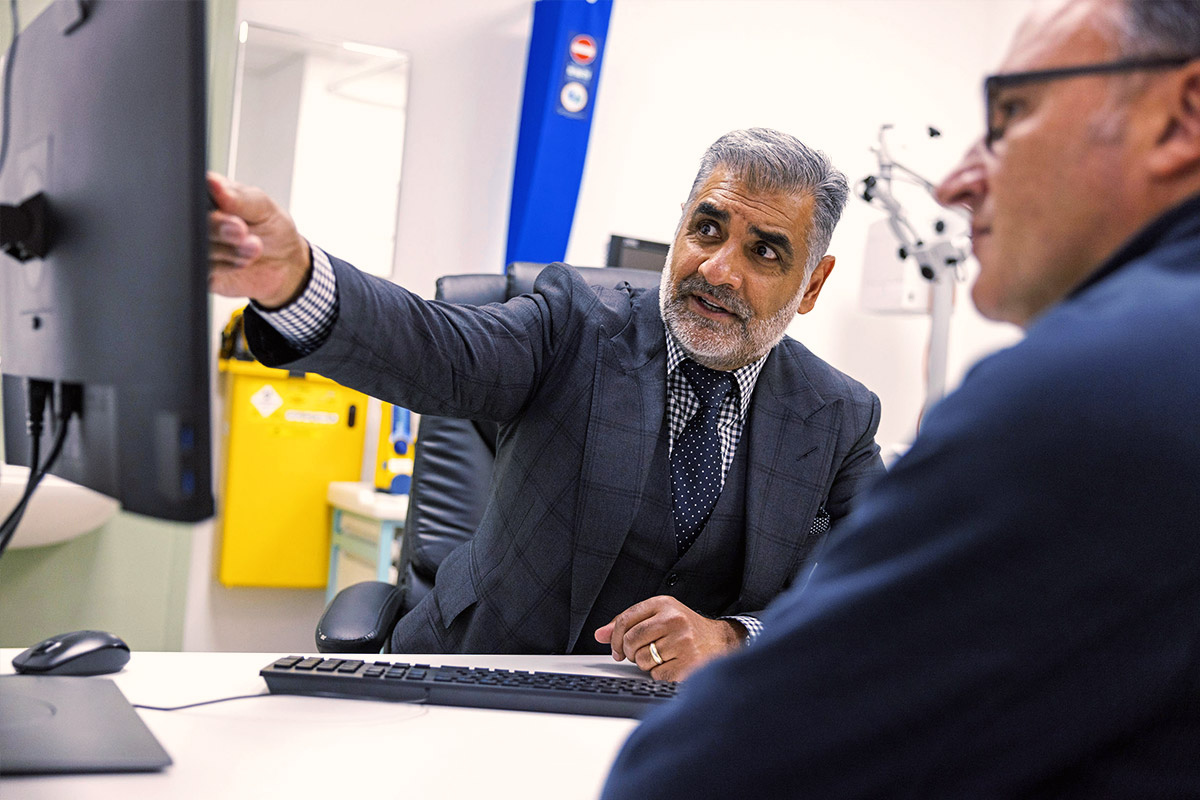Can MIDCAB Be Done to More Than One Artery? The Evolution of Multivessel Keyhole Bypass Surgery

The field of cardiac surgery has seen remarkable advancements in recent years, particularly in minimally invasive techniques. One such innovation that has revolutionised coronary revascularisation is Minimally Invasive Direct Coronary Artery Bypass (MIDCAB) surgery. While MIDCAB was initially developed for single-vessel disease, the question arises: can it be applied to multiple arteries? The answer is a resounding yes. Multivessel keyhole bypass, also known as Total Coronary Revascularisation via Anterior Thoracotomy (TCRAT) or Minimally Invasive Coronary Surgery – Coronary Artery Bypass Grafting (MICS-CABG), is a highly specialised surgery performed by very few surgeons in the world. As a pioneer in this field, I am excited to share insights into this groundbreaking procedure.
The Evolution of MIDCAB
MIDCAB was originally designed to address isolated lesions of the left anterior descending coronary artery (LAD). This technique offered a less invasive alternative to traditional coronary artery bypass grafting (CABG), avoiding sternotomy and cardiopulmonary bypass. The benefits were clear: reduced surgical trauma, faster recovery times, and lower risk of complications.
However, as our understanding and expertise grew, so did the potential applications of MIDCAB. Surgeons began to explore the possibility of extending this minimally invasive approach to patients with multivessel coronary artery disease.
TCRAT/MICS-CABG: The Pinnacle of Minimally Invasive Coronary Surgery
The transition from single-vessel to multivessel MIDCAB represents a significant leap in cardiac surgery. This advanced technique, known as Total Coronary Revascularisation via Anterior Thoracotomy (TCRAT) or Minimally Invasive Coronary Surgery – Coronary Artery Bypass Grafting (MICS-CABG), allows for complete revascularisation through a small thoracotomy.
The TCRAT/MICS-CABG Advantage
This innovative approach offers numerous benefits:
- Comprehensive Revascularisation: Unlike traditional MIDCAB, which is limited to the LAD, TCRAT / MICS-CABG enables access to multiple coronary arteries, allowing for complete revascularisation in multivessel disease.
- Minimal Access: The procedure is performed through a single, small anterior thoracotomy, significantly reducing surgical trauma.
- Preservation of Sternal Integrity: By avoiding sternotomy, TCRAT/MICS-CABG maintains the structural integrity of the chest, leading to faster recovery and reduced risk of complications.
- Improved Recovery: Patients experience less postoperative pain, reduced need for blood transfusions, and faster return to normal activities.
- Lower Infection Rates: The smaller incision is associated with a decreased risk of surgical site infections.
- Enhanced Cosmetic Outcome: The minimal scarring is particularly appreciated by patients concerned about their appearance post-surgery.
- Expanded Applicability: This technique can be applied to a wider range of patients, including those previously considered unsuitable for minimally invasive approaches.
- Excellent Visualisation: Advanced thoracoscopic equipment provides superior visualisation of the surgical field.
Pioneering TCRAT / MICS-CABG: A Personal Journey
As one of the few surgeons worldwide performing TCRAT / MICS-CABG, I have witnessed firsthand the transformative impact of this technique on patient outcomes. In 2022, I had the privilege of working with my carefully selected team in performing the UK’s first quadruple heart bypass through keyhole surgery. This milestone procedure demonstrated the feasibility and efficacy of multivessel keyhole bypass in even the most complex cases. Since then we have continued to offer TCRAT / MICS-CABG on several selected patients successfully.
The Learning Curve
Mastering TCRAT / MICS-CABG requires a significant investment in training and experience. The transition from open surgery to this advanced minimally invasive technique demands a paradigm shift in surgical approach. However, the benefits to patients make this journey worthwhile. Much of the learning curve has been acquired over the 20 years of preceding experience in performing minimally invasive procedures of all types.
Patient Selection and Outcomes
While TCRAT / MICS-CABG offers numerous advantages, proper patient selection remains crucial. Factors such as coronary anatomy, comorbidities, and previous surgeries play a role in determining candidacy for this procedure. In my experience, with careful selection, TCRAT / MICS-CABG has much to offer patients to improve their recovery from surgery.
Early mortality rates for TCRAT / MICS-CABG are impressively low. The limited published data suggests this to be equal to traditional sternotomy surgery. Long-term outcomes are equally promising, with high graft patency rates and excellent freedom from angina when performed by experienced surgeons.
The Future of Coronary Revascularisation
As we look to the future, TCRAT / MICS-CABG is poised to play an increasingly important role in coronary revascularisation. The ongoing refinement of surgical techniques and instruments will likely expand the indications for this approach.
Hybrid Procedures: The Best of Both Worlds
One exciting development is the integration of TCRAT / MICS-CABG into hybrid revascularisation strategies. By combining minimally invasive surgery with percutaneous coronary interventions, we can offer tailored solutions for patients with complex multivessel disease who are not otherwise suitable for TCRAT / MICS-CABG. This approach is particularly beneficial for older patients or those with significant comorbidities who might not tolerate traditional open-heart surgery.
Conclusion: A New Era in Cardiac Surgery
The evolution of MIDCAB to TCRAT / MICS-CABG represents a paradigm shift in coronary revascularisation. This highly specialised technique offers patients the benefits of complete revascularisation with minimal surgical trauma, faster recovery, and excellent long-term outcomes.
While TCRAT / MICS-CABG is currently performed by only a handful of surgeons globally, its benefits are clear. As we continue to push the boundaries of minimally invasive cardiac surgery, I am confident that more patients will have access to these advanced techniques, ushering in a new era of personalised, less invasive cardiac care.
The journey from single-vessel MIDCAB to multivessel TCRAT / MICS-CABG has been remarkable, and I am honoured to be at the forefront of this revolution in cardiac surgery. As we look to the future, the potential for further innovations in this field is boundless, promising even better outcomes for patients with coronary artery disease.

